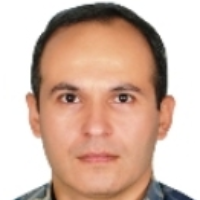Differential display of heat stress tolerance of olive cultivars ‘Zard’ and ‘Direh’ based on physiological and biochemical indexes as well as PPO and PAL genes expression pattern
Olive (Olea europaea L.) is one of the important horticultural crops in Iran which is planted in subtropical regions. In most parts of these regions temperature, particularly during the summer, rises to the level of heat-stress for this plant species. There is a scarcity of information about the heat tolerance of olive cultivars and also about effective physiological and biochemical mechanisms by which they response to this stress. Therefore, understanding of these mechanisms and also going toward the selection and cultivation of high tolerant varieties are within the olive breeding objects.
To study the impact of heat stress on physiological and biochemical traits changes as well as the expression pattern of phenylalanine amonialyase (PAL) and polyphenol oxidase (PPO) genes, a factorial experiment based on a completely randomized design was carried out in 2017. One-year-old own-rooted olive plants cvs. Zard and Direh were transferred into the artificial growth chamber and exposed to the different thermal conditions following an adaptation period. Thermal treatments included 32 oC (referred to as the before-stress stage, for three months), 45 oC (referred to as the stress-stage, for one month), and 36 oC for five days which referred to as the after-stress stage. Different traits including cumulative shoot growth and dry weight, relative water content (RWC), electrolyte leakage (EL), malondialdehyde contents (MDA), the maximum quantum yield of PSII (Fv/Fm), the minimum chlorophyll fluorescence (Fo), PPO and PAL enzyme activities and their genes expression pattern were studied. Data were analyzed by SAS 9.1 software, and the mean comparisons were made by LSD (P ≤0.01).
The findings related to growth indexes, i.e., the cumulative shoot growth and dry weight, demonstrated the relative superiority of ‘Zard’ compared with that of ‘Direh’ under heat stress. The RWC was decreased significantly in leaf samples of both cultivars in response to high temperature. However, this reduction was more pronounced in ‘Direh’. The extent of injury to cell structures, based on the measurement of EL and MDA indexes, indicated that ‘Zard’ got suffer less damage than ‘Direh’ under heat stress and also recovered itself quicker at the recovery stage. Under heat stress conditions, a more and significant decrease in terms of the Fv/Fm index was shown in ‘Direh’ compared with ‘Zard’. In contrast with the Fv/Fm , the Fo index was higher significantly in ‘Zard’. The PPO and PAL activity was increased, with pronounced effect in ‘Zard’, under heat stress condition. The activity of PPO in both cultivars was declined following the heat stress at the recovery stage. The analysis of the expression patterns of genes related to PPO and PAL revealed their up-regulation in both cultivars in response to heat stress. The relative increase of PPO and PAL genes expression in ‘Zard’ and ‘Direh’ under heat stress conditions was respectively 3 and 1.5 times more than the before-stress stage.
The results here showed that olive cv. Zard had relatively more tolerance to heat stress. Also, this cultivar had a high ability to recover its physiological and biochemical traits following the heat stress at the recovery stage.
- حق عضویت دریافتی صرف حمایت از نشریات عضو و نگهداری، تکمیل و توسعه مگیران میشود.
- پرداخت حق اشتراک و دانلود مقالات اجازه بازنشر آن در سایر رسانههای چاپی و دیجیتال را به کاربر نمیدهد.




